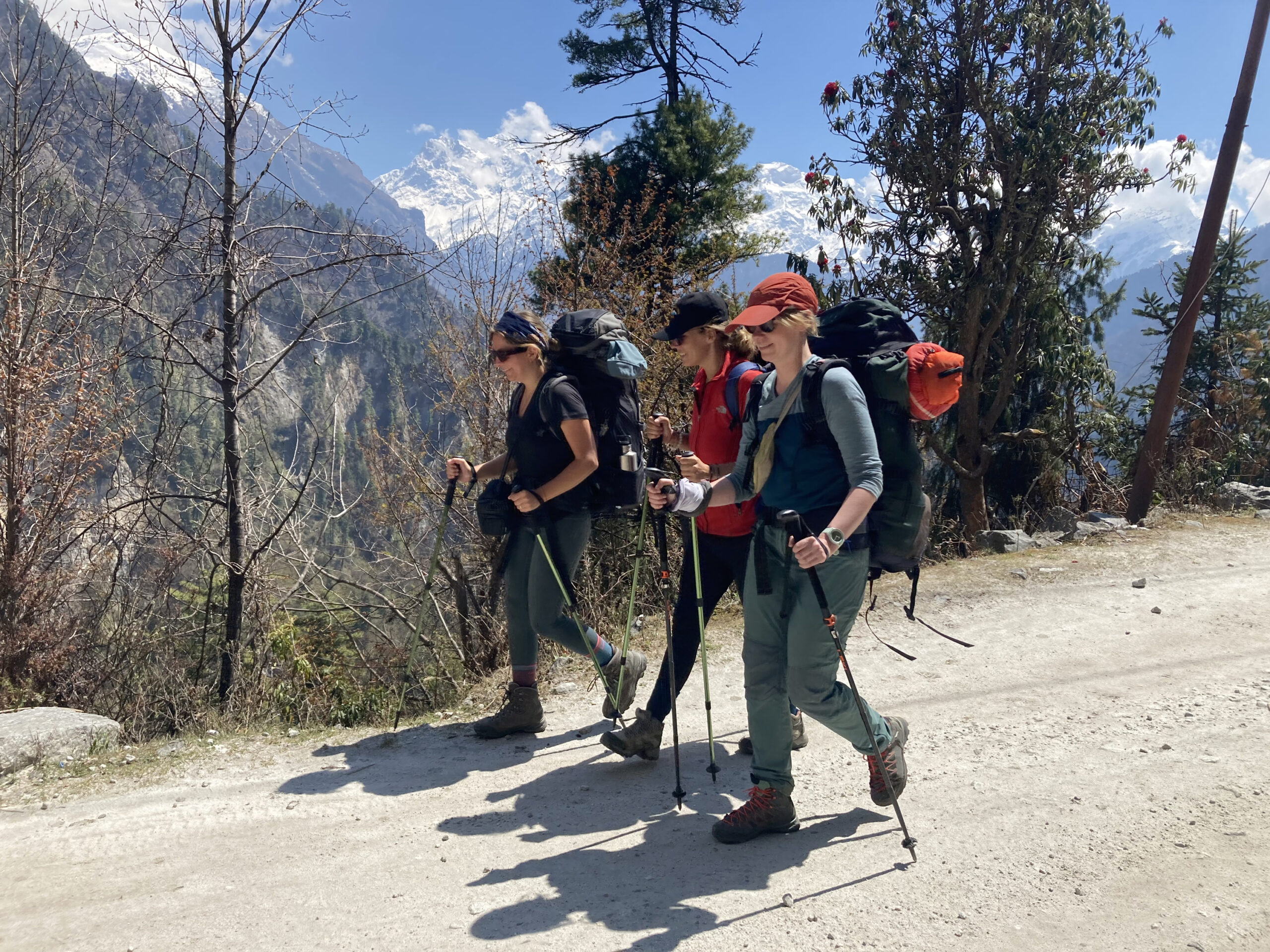KATHMANDU: Nepal witnessed a notable surge in tourist arrivals in October, with the number of visitors by air reaching 117,000, surpassing the previous month’s figure of 91,017 tourists in September.
The Nepal Tourism Board (NTB) highlights September and October as peak tourism seasons, attracting a combined total of 207,000 foreign tourists.
Over the past nine months, Nepal has welcomed seven lakh tourists, with the highest influx occurring during the festive months of September and October.
It’s worth noting that these statistics exclude Indian tourists arriving by road.
The economic downturn post-Covid has impacted domestic tourism, and during these two critical months, the influx of foreign tourists played a crucial role in sustaining Nepal’s tourism sector.
The festivities of Dashain and Tihar also stimulated domestic tourism, particularly outside the Kathmandu Valley, leading to increased activity in Chitwan, Pokhara, and Mustang.
Tourist Hotspots Experience Resurgence
During the second season of the year, Kathmandu, Chitwan, Pokhara, and Mustang experienced a significant uptick in tourist numbers.
Although official government data is yet to be released, local tourism professionals report a notable transformation in the hotel industry.
Previously deserted hotels in Chitwan and Pokhara witnessed a surge in occupancy after Dashain and Tihar.
Amid economic uncertainties, hotels in Sauraha, Bharatpur, and Meghauli in Chitwan were filled with tourists, marking a stark contrast to the subdued situation in September.
The absence of the board from major global events, such as the “World Travel Mart” (WTM) in London, UK, and the “ITB Berlin” in March, has severely impacted Nepal’s visibility on the international stage.
A similar trend was observed in Pokhara, where hotel occupancy increased post-Dasain, providing a much-needed boost to local businesses.
Despite the challenges posed by the economic recession, the tourism sector in key regions of Nepal demonstrated resilience during these festive months.
Sauraha and Mustang Emerge as Hotspots
Contrary to the usual trends, Sauraha, a renowned destination in Nepal, experienced an unexpected turn of events this season.
Hotelier Ganga Giri revealed that, even after the commencement of the tourism season, all hotels in Sauraha remained unoccupied.
This revelation was made to participants of the Golden Triangle Bike Tour, who arrived in Sauraha the day after International Tourism Day on September 27.
Despite the initial setback, the scenario changed drastically in October and November, with 80 percent of Sauraha’s hotel rooms being occupied during the festive periods of Dashain and Tihar.
In October, Pokhara witnessed a moderate increase in tourist numbers. The continuous efforts in promoting tourism in Pokhara contributed to the rise in both domestic and international tourist arrivals.
This year, Mustang emerged as the preferred destination, experiencing a substantial influx of tourists.
In the months of October and November, nearly one lakh tourists flocked to Mustang, predominantly from within the country and some from overseas.
The resurgence of tourism in Mustang post-Covid and the economic recession marks a notable revival for the region.
Additionally, other destinations such as Lumbini, Janakpurdham, Pathibhara, Everest Base Camp, Annapurna Base Camp, Mardi Himal, Tilicho Lake, Bandipur, and Manahunkot also witnessed an increase in tourist footfall during this period.
The regions of Karnali, including Rara and She-Foksundo lakes, observed a rise in tourist traffic this year. Even in the Far West, areas like Khaptad and Badimalika attracted tourists, both from Nepal and India.
Notably, these regions have experienced an uptick in tourist arrivals despite minimal tourism promotion efforts.
The recent surge in Nepalese and Indian tourists to Karnali and Far West signifies the untapped potential of these areas in the tourism sector.
Meanwhile, the international promotion of Nepal’s tourism has witnessed a sharp decline this year, attributed to delays in passing the Nepal Tourism Board’s budget by the Minister of Culture, Tourism, and Civil Aviation, Sudan Kirati.
The budget, which should have been approved in July, was only passed in October, leaving the Nepal Tourism Board unable to execute any international promotion programs throughout the year.
The absence of the board from major global events, such as the “World Travel Mart” (WTM) in London, UK, and the “ITB Berlin” in March, has severely impacted Nepal’s visibility on the international stage.
Both WTM and ITB Berlin are considered crucial platforms for promoting Nepal in Europe, and the failure to participate has raised concerns among business stakeholders about attracting foreign tourists in the upcoming season.
Dr. Dhananjay Regmi, the Chief Executive Officer of Nepal Tourism Board, acknowledged the losses incurred due to the inability to participate in international tourism promotion programs.
Achyut Guragain, the outgoing President of Nepal Association of Tour and Travel Agents (NATTA), expressed frustration, stating, “Due to the tourism ministry and the board, our international promotion is almost zero this year.”
He highlighted the weakened presence of Nepal in tourism promotion programs across neighboring countries like India, Bangladesh, Bhutan, Thailand, and Sri Lanka, attributing it to ineffective coordination between the Ministry of Tourism and the Tourism Board.
Guragain further criticized the Tourism Board’s impact on the sector, emphasizing the board’s role in supporting and counting tourist arrivals.
During the Visit Bharatpur program, he remarked, “We suffered a lot because of the board’s staff. We could not promote Nepal internationally.”
Dr. Dhananjay Regmi, the Chief Executive Officer of Nepal Tourism Board, acknowledged the losses incurred due to the inability to participate in international tourism promotion programs.
He urged tourism professionals and stakeholders to raise their voices in response to the situation and emphasized the need for timely budget approvals to prevent further setbacks.
Regmi expressed concerns that the failure to attend WTM and ITB Berlin this year could result in a decrease in the number of tourists visiting Nepal, emphasizing the collective responsibility of industry players to address these challenges.









Comment